If the weeds are removed as young seedlings they do not have seeds to spread and the root system is still very small to break and establish itself again. The more young weed seedlings are removed the less weeding in the future.
The best and most used method to clear a vegetable garden full of weeds is hand-pulling or hoeing the weeds. Hand-pull or hoe the weeds while they are still young before they go to seed. Once the weeds go seed, they can spread the seeds in garden beds while they are being removed. Use a hoe to remove very young weed seedlings including the roots. If the weeds are large enough to pull, pull the whole plant by hand together with the root system. Hoeing large weeds with large and deep root systems could cut the roots underground and leave some part of the roots in the ground which would lead to the regrowth of the weed. If the weeds are large, rather pull them by hand than hoe them. When removing the weeds, remove the whole plant including the roots. If the roots are left in the soil, the weeds will regrow.
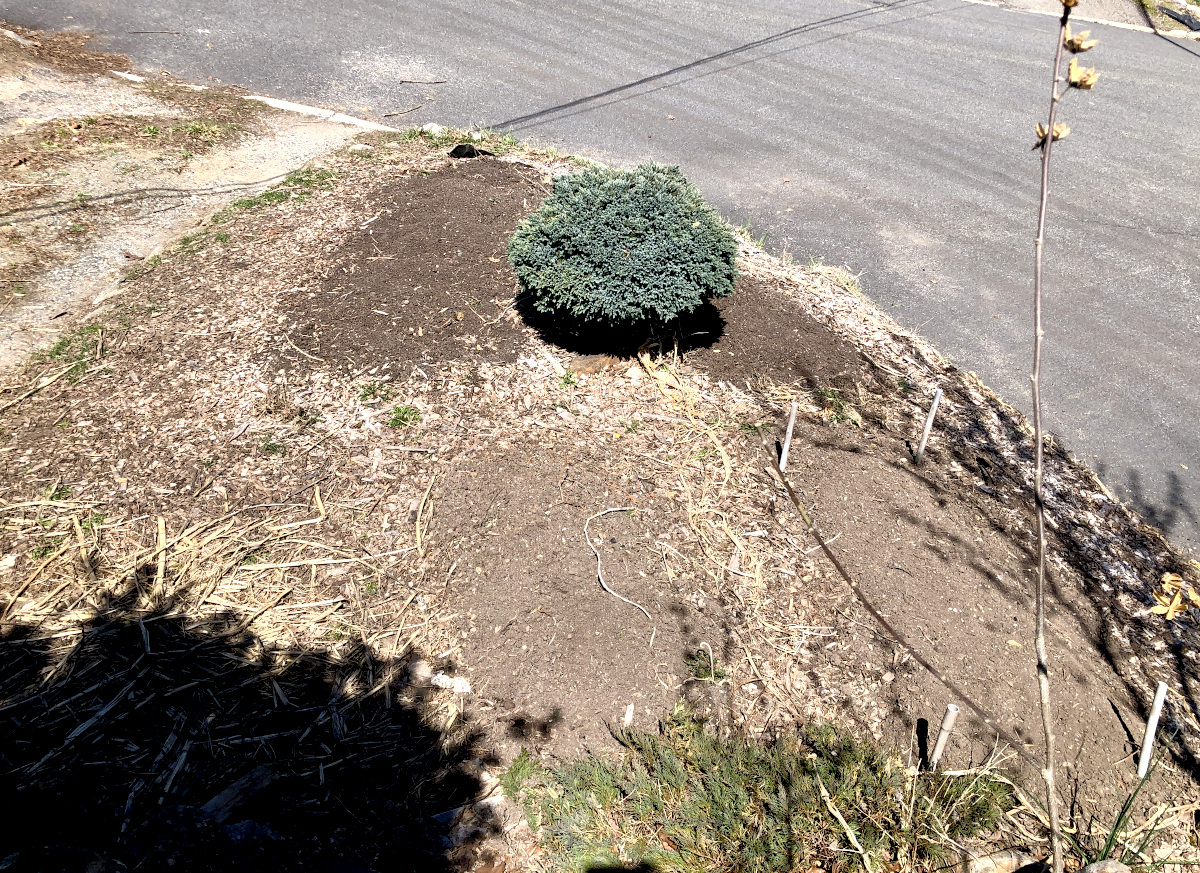
If your garden is full of weeds constantly, it might mean that you pull the weeds out once they go to seed and spread their seed in your garden bed. Rather remove the weeds when they are still young before they go to flower and produce seeds that could spread in the soil.
A GOOD READ: How do I clear my garden in the spring?
Raised bed and container gardens, in general, have fewer weeds and need less weeding, because it is easier to control the soil that is put in the garden beds and containers, and it is, therefore, easier to weed.
How do I keep weeds out of my vegetable garden?
- Mulch your garden beds as mulch helps to prevent weeds in the garden. Mulch around your plants with a thick layer of mulch. Weeds have a hard time growing through the thick mulch layer. Do not leave soil bare as this will promote weed growth.
- Plant densely. Use intercropping or close planting keeping only a minimum spacing for the plants. By planting your plants in high density, they will overgrow the weeds, will shade the weeds, and provide less space for the weed to get a chance to establish themselves.
- Remove the weeds while they are still young and the roots are weak and not well established. Stronger weed plants have a bigger chance to break at the roots while being removed and leave some part of the roots deep under the soil to regrow.
- Remove weeds before they go to seed. The seeds reseed themselves by producing their own seed and spreading it around them in the soil. If the weeds are removed before they go to seed, they will have no chance to reseed themselves in the garden beds.
- When using manure or compost, ensure they are well broken down and aged. Not well-composted plants and not well-broken-down manure can have viable weed seeds in it that could establish themselves in the garden beds and take over.
- When removing weeds, ensure the whole root system is being pulled or dug out.
- If the garden plot is very weedy, kill the weeds before planting any crop. The weeds can be killed by covering the plot with overlapping cardboard, plastic, or tarp to keep the light and air out. Leave the plot covered for at least one growing season before planting in it. This is best done over winter.
- When removing well-established large perennial weeds with very deep root systems, use a garden shovel, or garden fork to loosen up the roots before pulling the plant out.
- Removing smaller weeds, use a hand fork or a hoe.
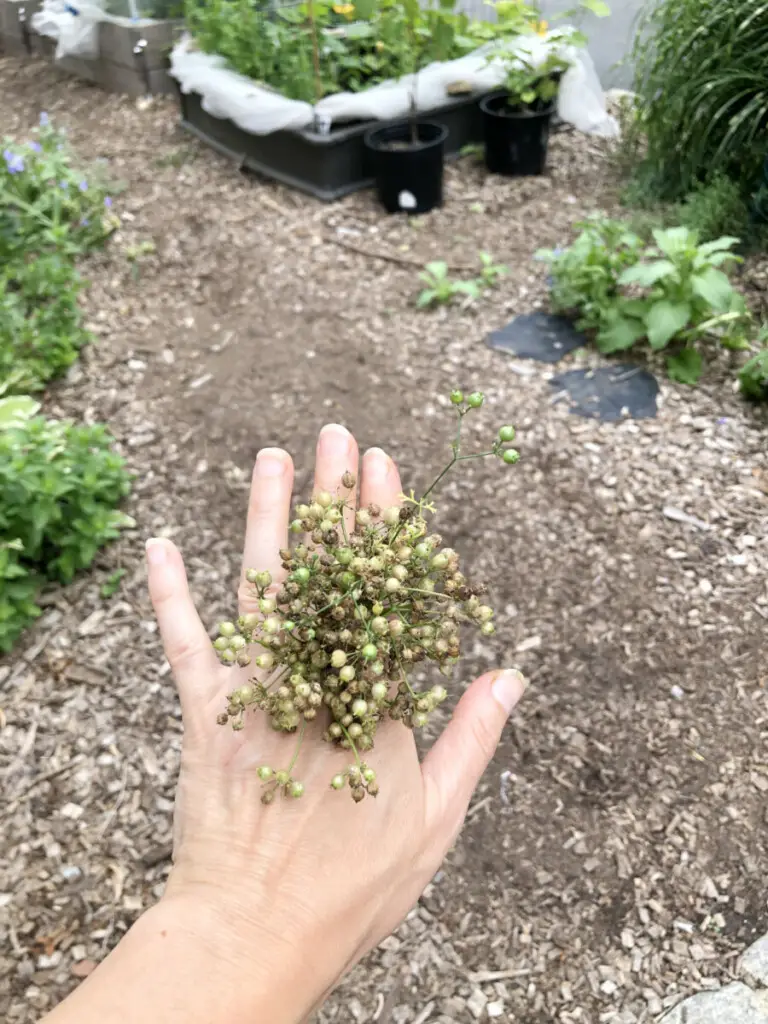
How do I kill weeds in my raised vegetable garden?
Simply remove the weeds by pulling them out with the roots or hoeing them down. If the garden bed is completely overtaken by well-established and mature weeds, cover the garden bed with a lightproof layer like a tarp, or layered cardboard, and allow the weeds to die down completely. The cover should be lightproof and sturdy enough for the weeds not to penetrate it. Allow this cover to sit in the garden bed for at least one whole growing season or over winter. Before you plant anything, dig in the soil to ensure the roots are rotten and decayed as well. Grass clippings and cardboard material is a great way to kill weeds. Layer them directly on the weed and let the weed die under them. Grass clippings and cardboard will eventually decay and feed your garden soil microorganisms.
Use a hand–held hoe for small garden beds, and containers. This is a hand–held hoe that has a short handle that is very handy to use and move around within small spaces and small gardens such as balcony gardens, container gardens, and small raised beds.
Use a regular garden hoe for large and wide garden beds, inground gardens, and in places harder to reach by hand. This regular garden hoe has a long sturdy wooden handle and can be used not only for weeding but also for digging holes for planting, making rows for direct seeding, and is overall very versatile concerning its usage.
Here, you can find a special weeding hoe that is intended only for hoe weeding. It is light and comes with a long sturdy handle to enable you to reach places under low trees, bushes, or fruit canes and between vegetable plants.
A GOOD READ: Should I remove old roots before planting?
Should you pull weeds in a vegetable garden?
Yes, the weeds in a vegetable garden should be pulled out before they are well established, and before they go to seed. A weed is any plant that is not wanted in the garden. When removing the weeds from a vegetable garden, remove the whole plant including the whole root system. If the weeds are left in the vegetable garden, they will compete with your vegetable plants and win! The weeds will take over, spread rapidly, and take away nutrients, water, space, and sunshine from your vegetable plants.
For weeds with strong, wide, and deep roots use a hand trowel to loosen the soil and pull the weed out with the roots. For larger roots and more established plants use a larger tool like a garden shovel, which can go much deeper to loosen the soil and remove larger roots of more established weeds. Pulling and digging the weeds out is one of the safest ways to remove them permanently so they do not regrow.
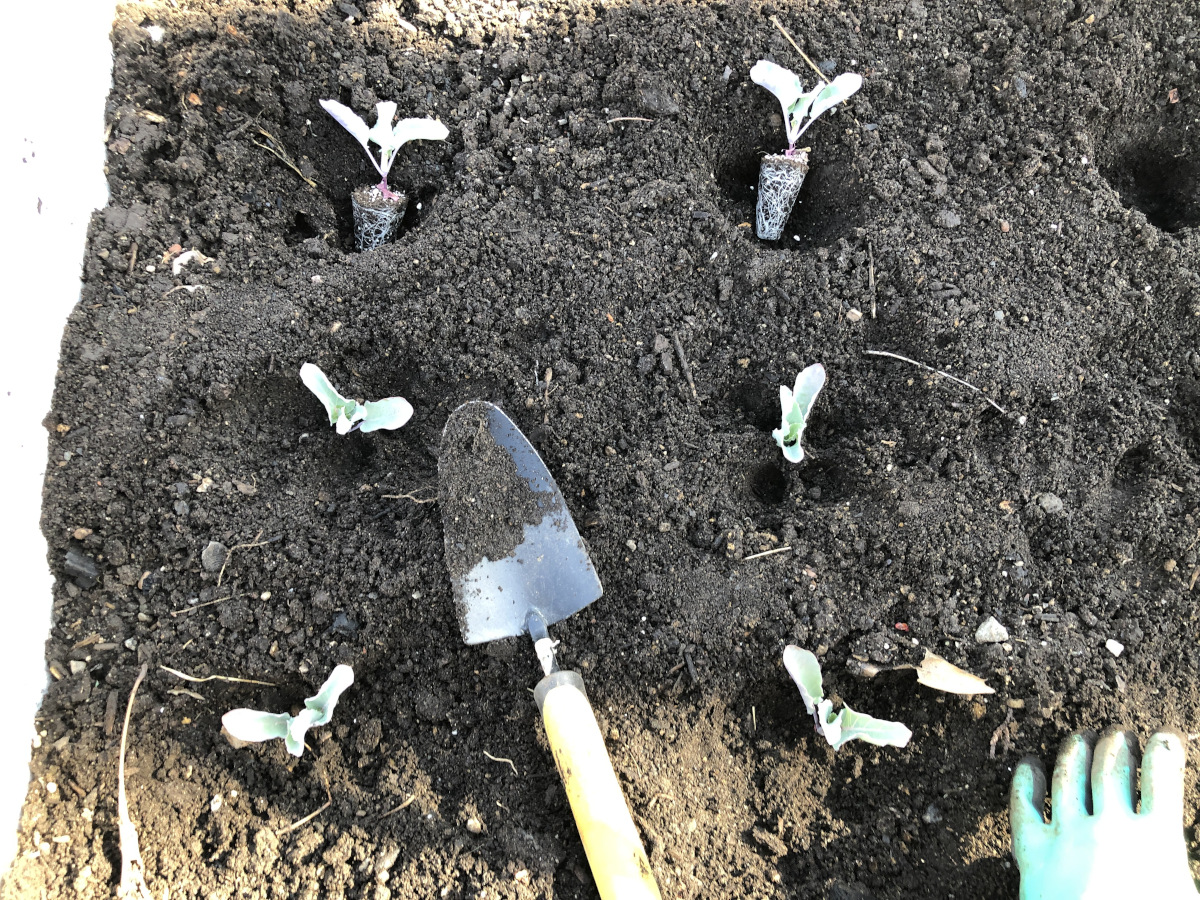
Can I spray weeds in my vegetable garden with vinegar?
While vinegar might be a great way to kill weeds, along with a salt and water solution, it will affect your vegetable roots as well. Rather pull or hoe the weeds down than spraying them with vinegar which could also damage your tender vegetable plants and roots.
If killing the weeds is outside the vegetable garden where you know you will not plant anything, then vinegar and a sold and water solution is a great way to kill the weeds all the way down to the roots.
Do not spray any chemical weed killers in your vegetable garden as these could kill your plants also, contaminate your soil and kill microorganisms in the soil.
A GOOD READ: Should I leave dead plants in the garden?
How do I keep weeds from growing in my vegetable garden over winter?
Weeds can be kept out of the vegetable garden over winter by leaving old vegetable roots in the ground, planting cover crops, and mulching your garden beds with a thick layer of mulch.
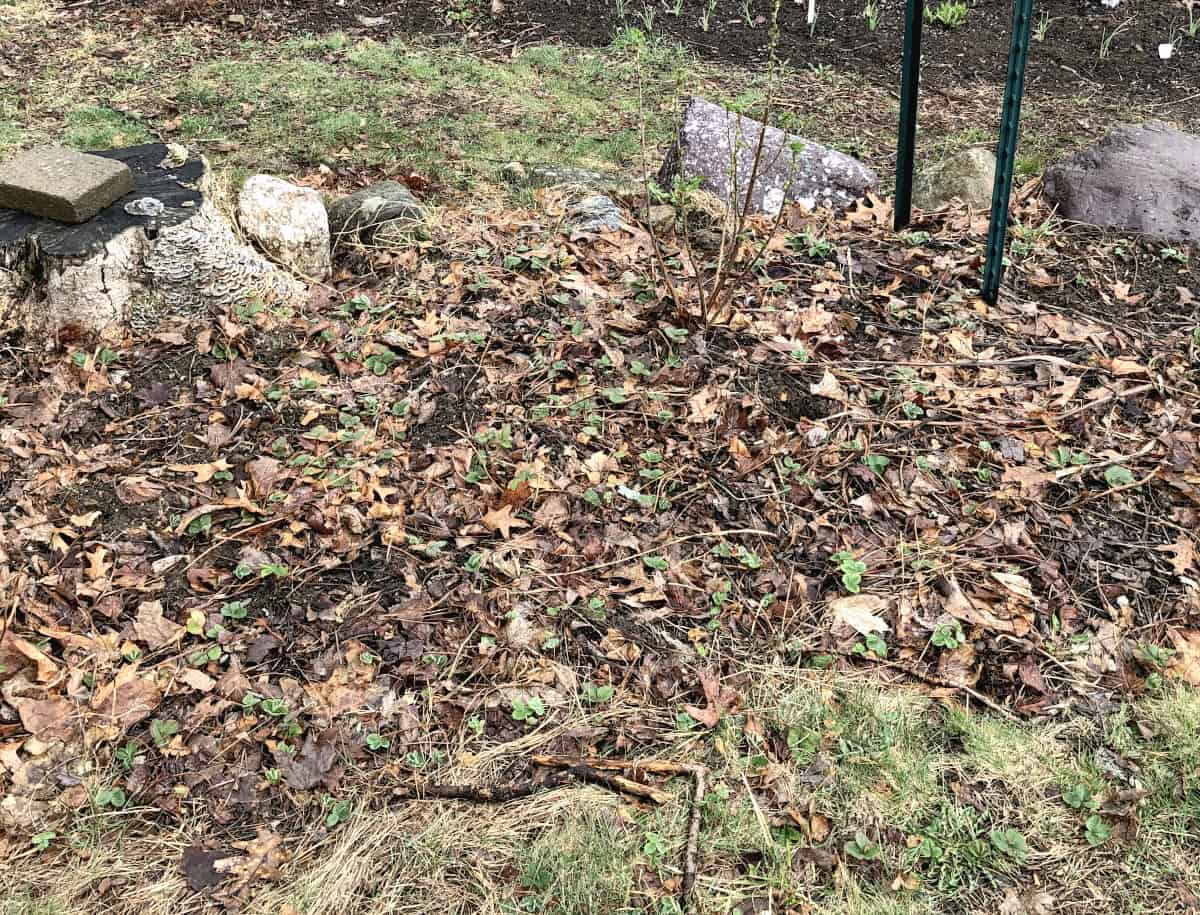
As the old roots are left in garden beds they leave less space for the weeds to grow.
Cover crops like ryegrass, hairy vetch, and clover will keep the weeds away during winter months and provide your soil with valuable nutrients. I have linked all of these cover crops to their seeds, where you can source them from. They grow quickly below the surface and above it. As they decay they will leave the soil aerated, nourished, and full of biomass. All of these listed are good for garden beds, raised bed gardens, container gardens as well as inground gardeners. These can be turned or just left on top of the soil to rot and turn into natural compost, best over the winter time.
Mulching garden beds with a thick layer of wood chips, straw, grass clippings, or shredded leaves, will prevent weeds from growing. It will also protect the soil from compaction, and erosion, and will lock in the nutrients. Mulch will also hold and preserve the moisture in the soil. Not all of us home gardeners have a handy source where to source these mulches, therefore I have included here a link to the organic straw mulch if looking for an online source.
How do I control weeds between my raised beds?
Control the weeds between raised beds by mulching. Lay a thick layer of several inches of mulch such as wood chips, straw, cardboard, or shredded newspaper between the raised beds. Mulch will kill the weeds underneath, and prevent them from growing and reseeding. It will also become a great pathway that keeps the mud away.
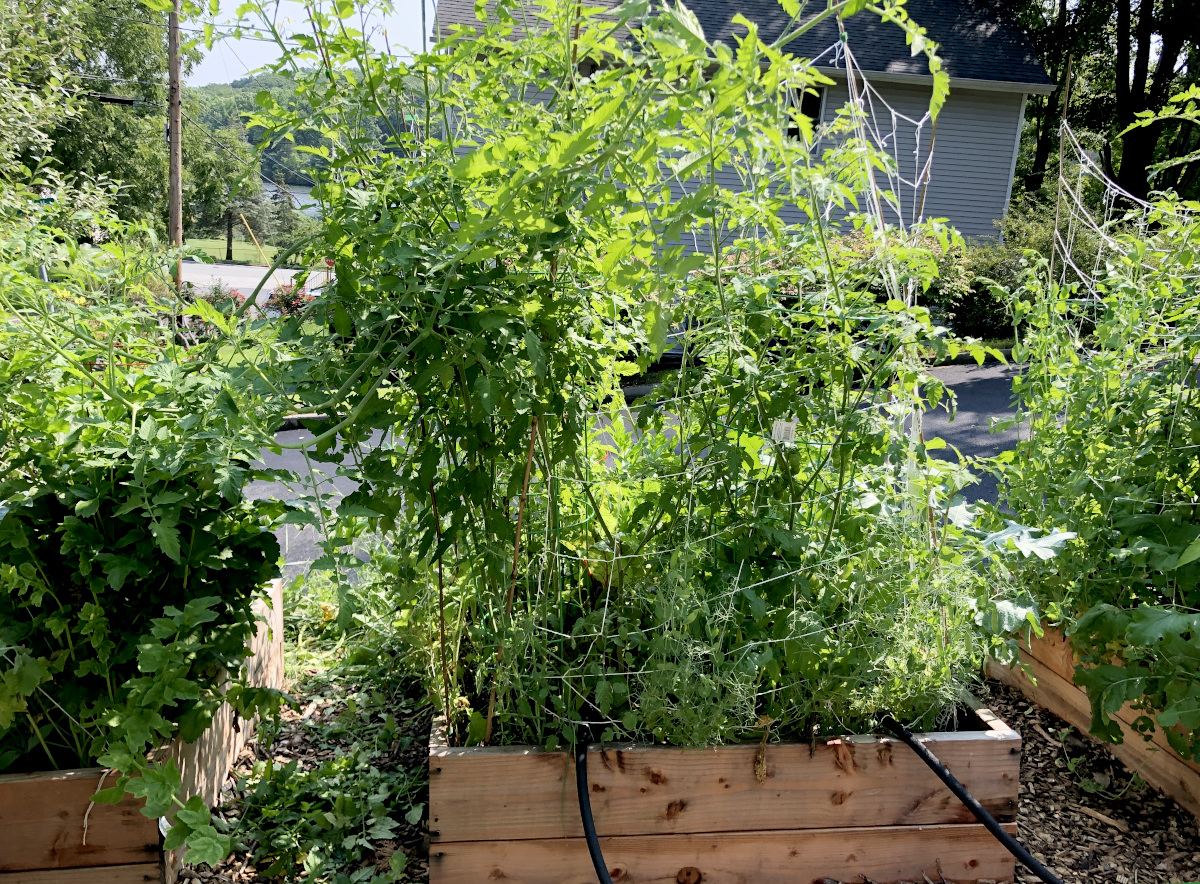
I use mulch for my pathways between the raised beds. This will never get muddy and will keep me clean whenever I am out in the garden. It also prevents weeds from growing while providing me with a sturdy surface to walk on.
A large roll of corrugated cardboard will go a long way as a weed barrier that can be used on the bottom of the garden beds or on top of the soil for weed prevention before planting seedlings. A large roll of corrugated cardboard roll can be found here. Just lay a roll where you would like to create a weed barrier and roll it. It will stay in place easier than individual sheets, it is easier to work with and much quicker to unpack, use and pack it back. A very handy natural weed barrier that does not break the bank or a back when working with. This natural weed barrier can be laid down around trees and perennials first before mulching with shredded mulch. It will strengthen the weed barrier, and kill the weeds underneath and as it decomposes it will also feed the soil and microorganism beneath.
How to get rid of weeds around shrubs?
Sheet layering and mulching around the shrubs as well as bushes, and trees is the best way to get rid of weeds and keep them away permanently. Layer 5 sheets of newspaper, or a thick sheet of cardboard, then about 3 inches of wood chips on top. This will kill all the existing weeds around shrubs and trees and will prevent future weed growth.
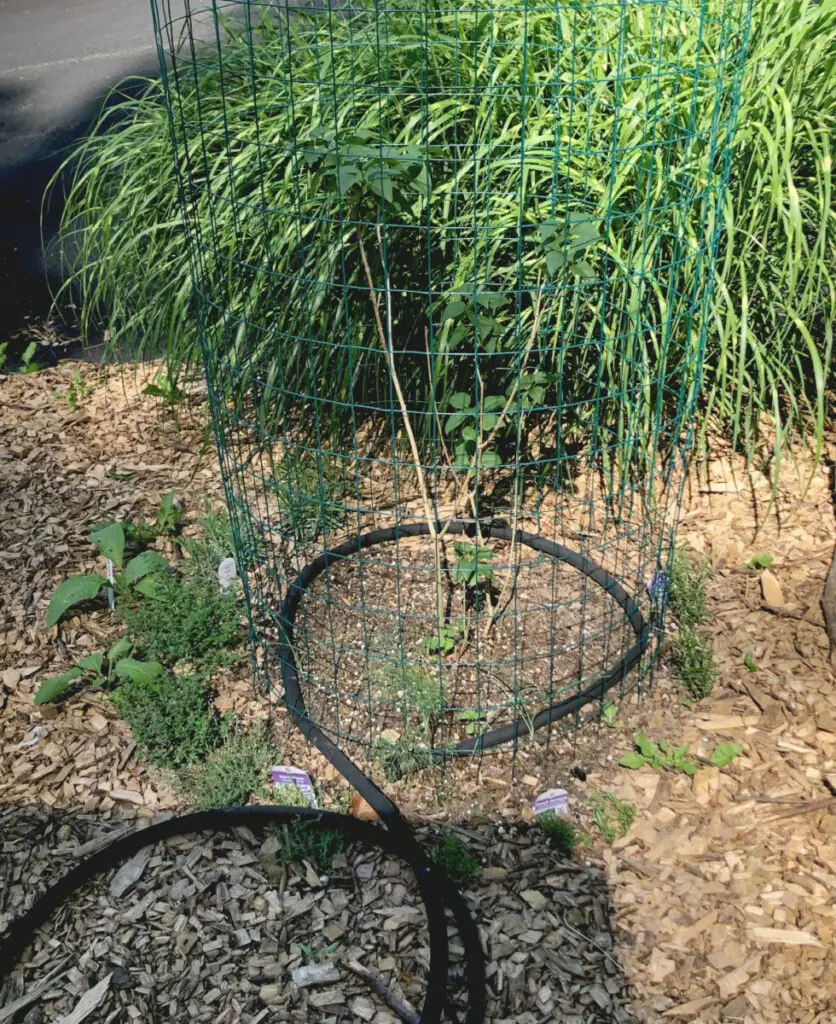
I also plant around perennials like shrubs, and trees to keep the weeds away. I plant herbs, perennial and annual flowers, and some annual vegetables like onions and leeks to keep not only weeds but also pests away. If you do not mulch, then plant something you like instead of mulching. If the soil is not occupied, the weeds will gladly take its place!
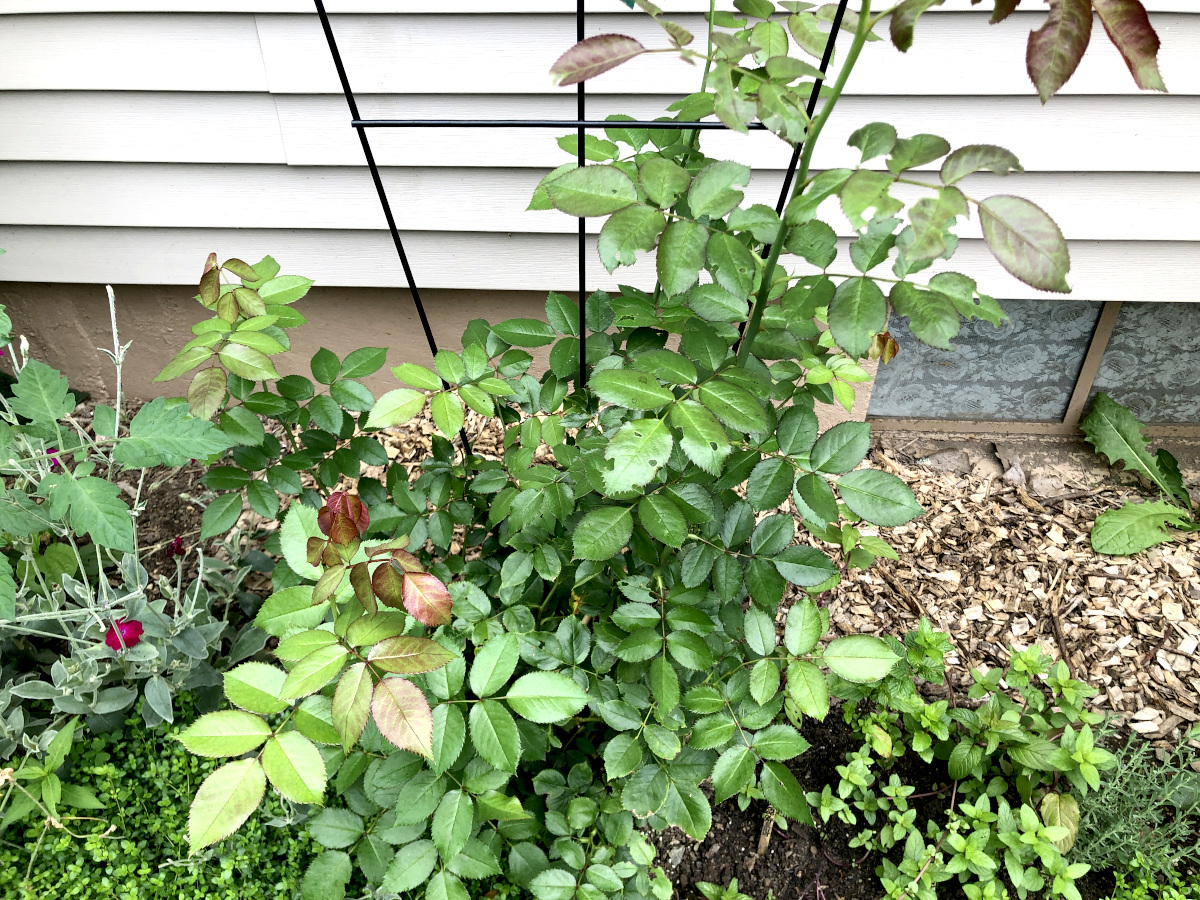
Should I leave dead plants in the garden

